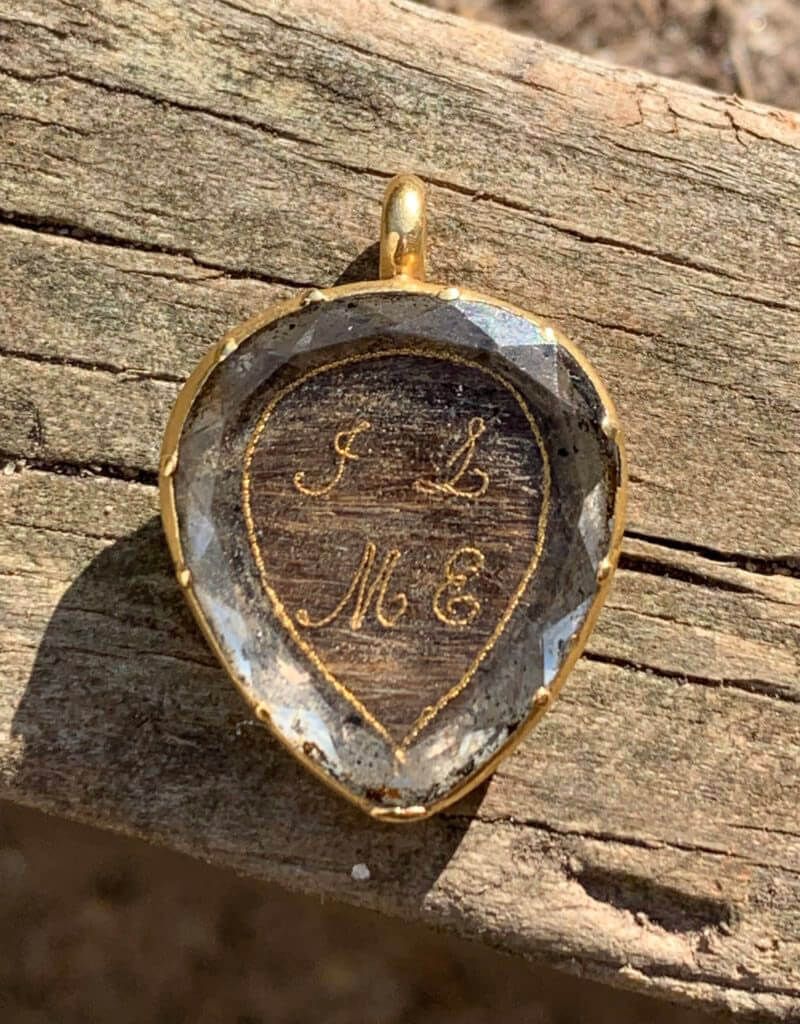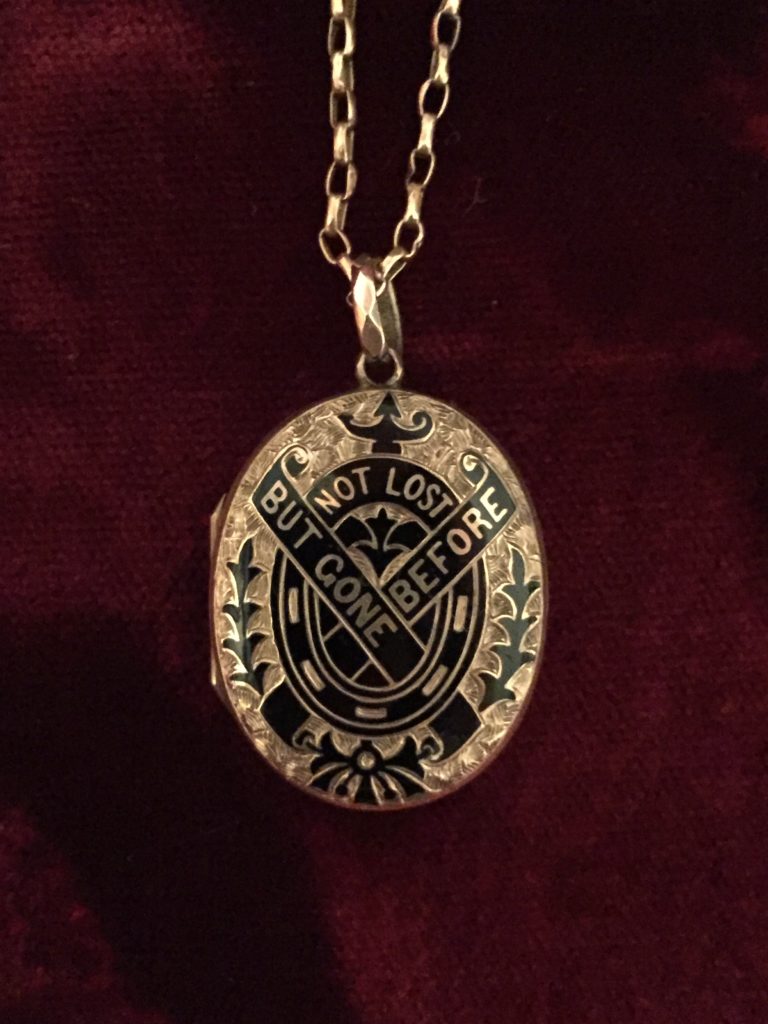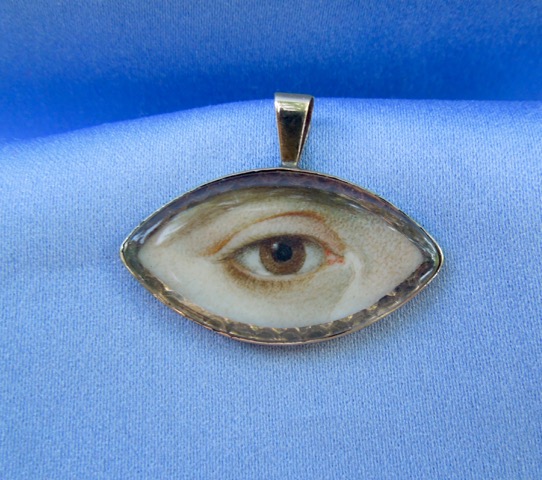“My Olive Branches” Twisted Hairwork Locket, 1849
Post 1859, many of the jewels that are commonly found in antique stores and fairs had their origin. This is mostly due to two fundamental things; the death of Albert in 1861 (and the concurrent Civil War in America) and the Hallmarking Act which allowed for lower grade alloys to be used in jewellery construction. Suddenly, there was a catalyst for mourning and sentimental jewels to be produced and a very necessary reason for them to be fashionable.
This was a culture that had been under the concept of the ‘Victorian family’ since her marriage and first child in 1840, indeed, the 1840s and Romanticism cemented much of the concepts of family and sentimentality that Western cultures still use as their value systems today. From the affectations of Christmas to the concept of flora and fauna having their own individual meaning, social structures were being set in place which had their own identities. The statement of showing these symbols reflected back upon the self and the family as a unit, hence a mother in perpetual morning for a family member represented the entire family.
Then there is the more personal statements of love and sentimentality, which this piece shows in abundance. The ‘olive branch’ references peace and victory, while its intent towards another, and in the plural, is a wonderful sentiment of love that denotes the loved one to be the loving ideal of hope and peace for an individual.
With the reverse, we see curled hairwork, which is non-standardised. There is an element of the personal to this as well, as its unique nature resonates with folk art of the time. When considering these pieces of the mid to late 19th century, look beyond the normal and find the pieces which are not typical of their time. With this unique hairwork, we have a tale of personal sentiment that could have been done by a standard jeweller and not a hair worker. The palette-worked hair is not set to a standard design, which many were by this time, and we have a keepsake for a loved one that speaks through the hairwork in the locket to its case.








